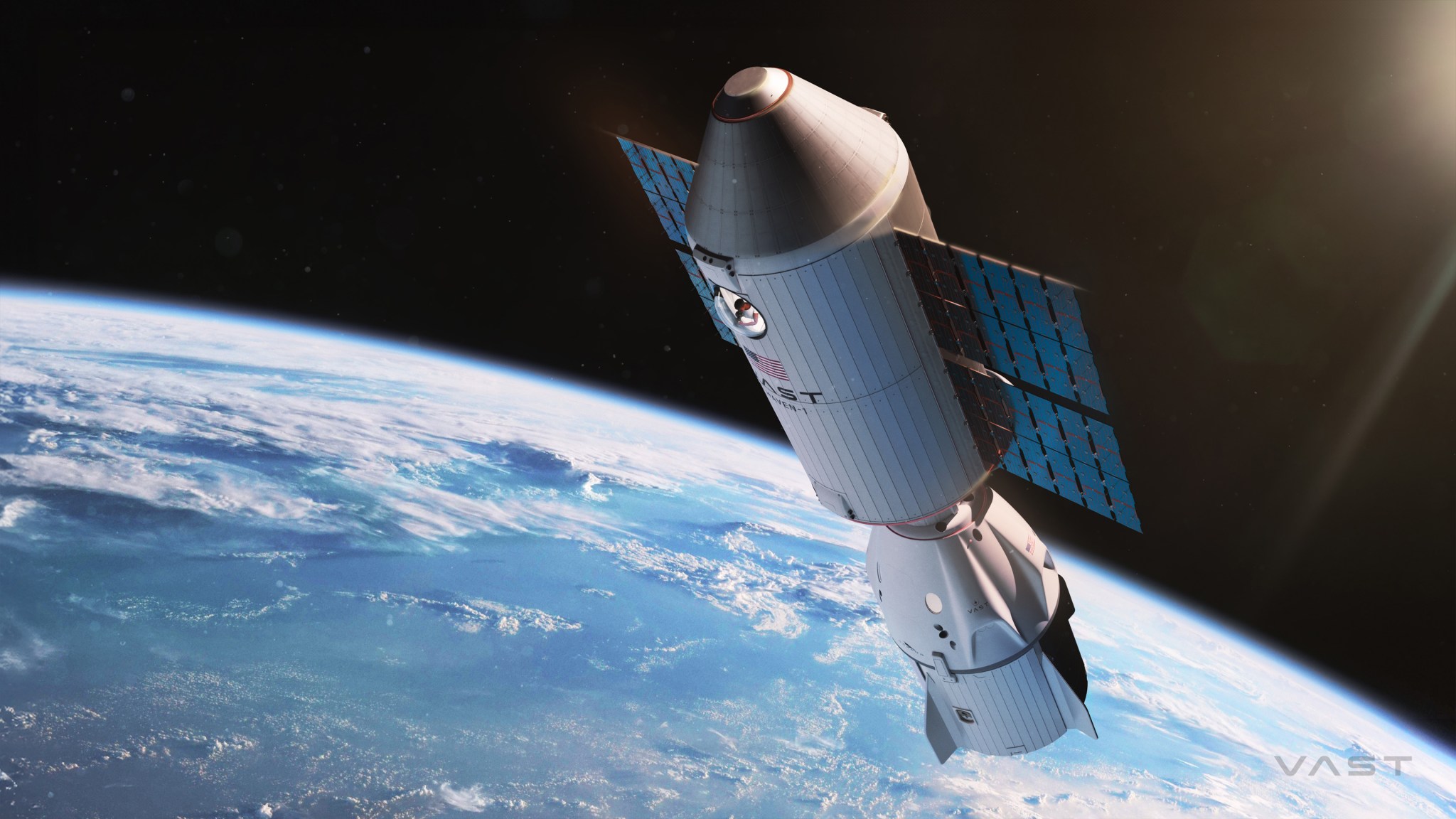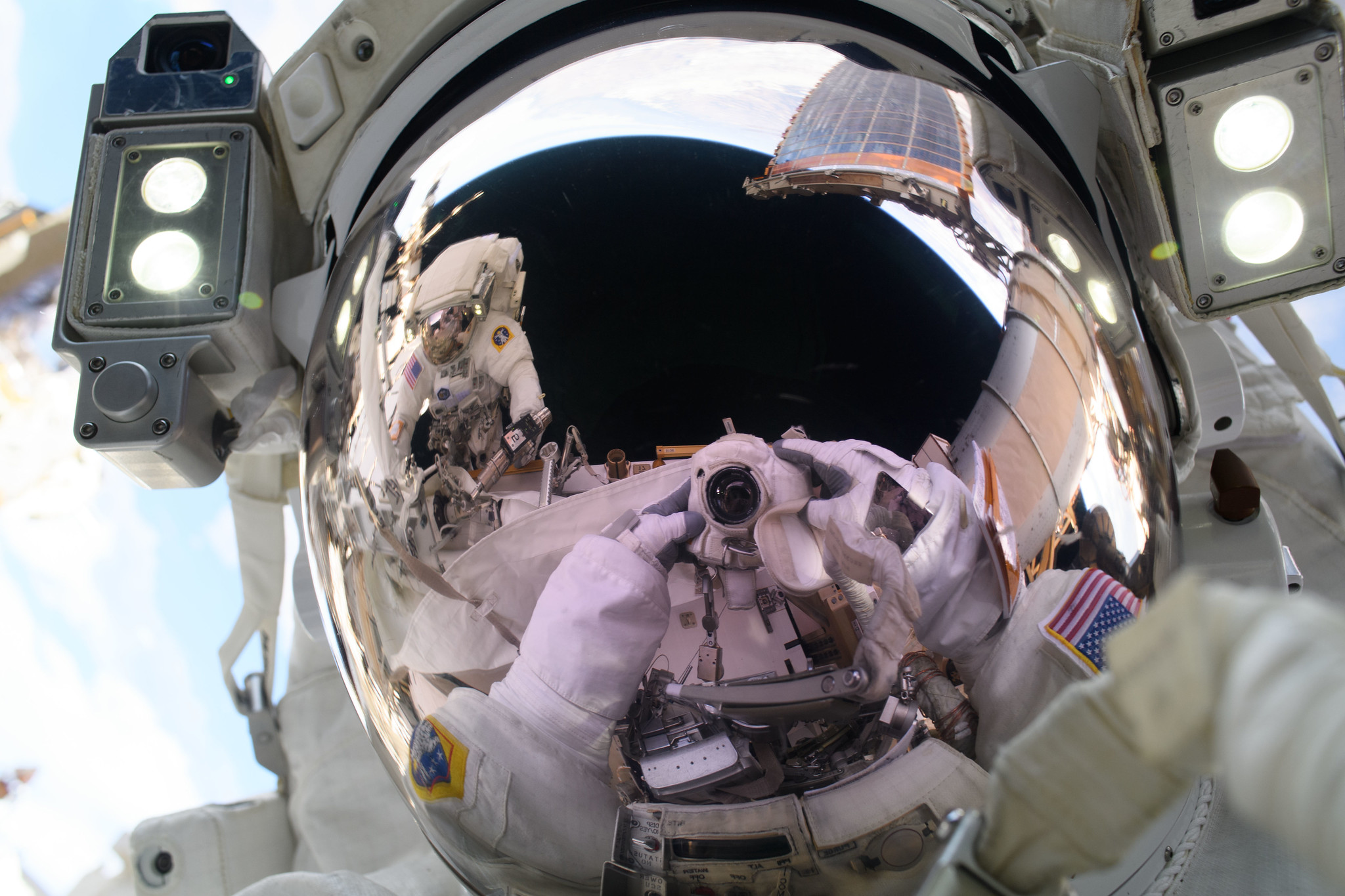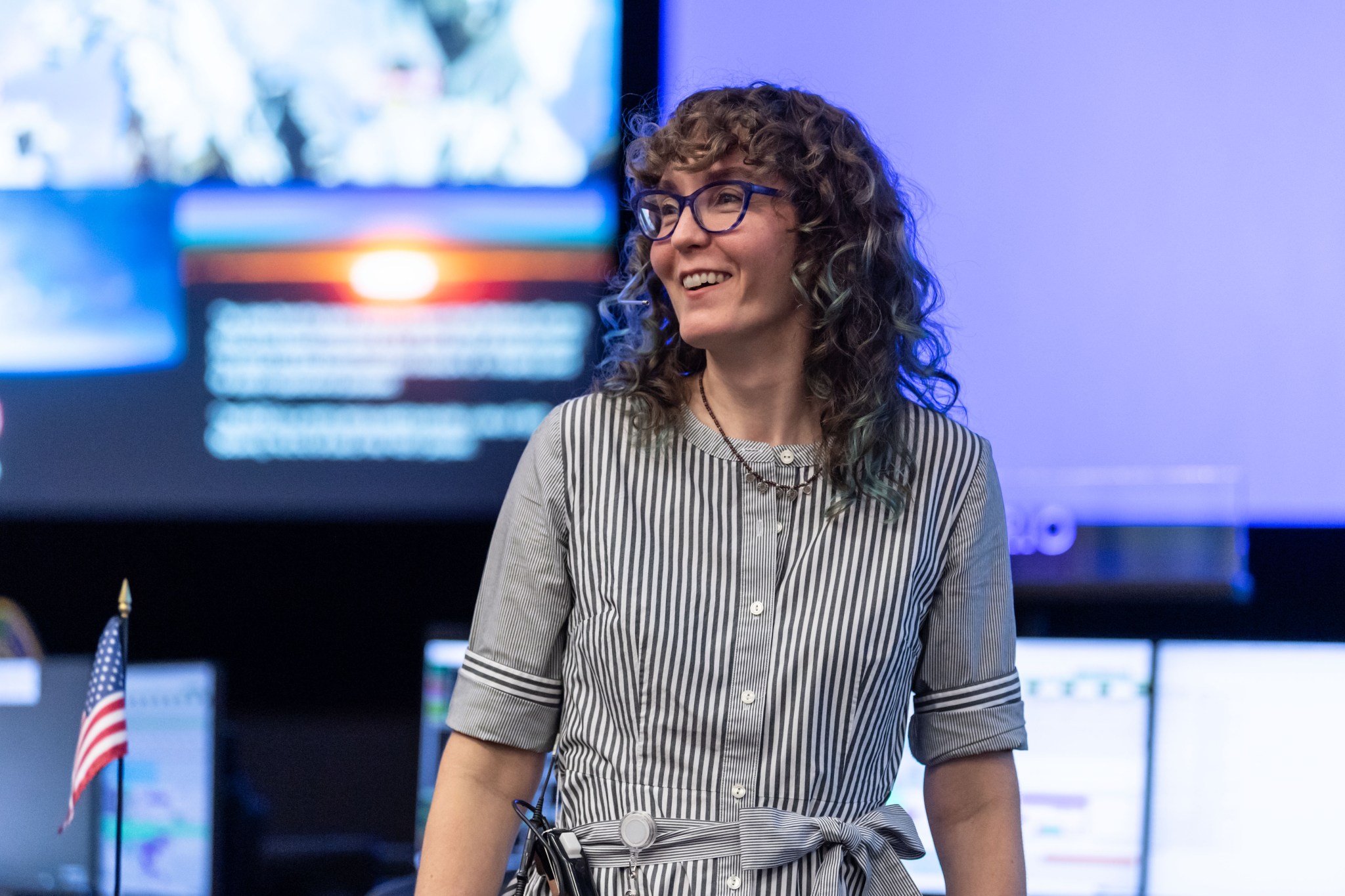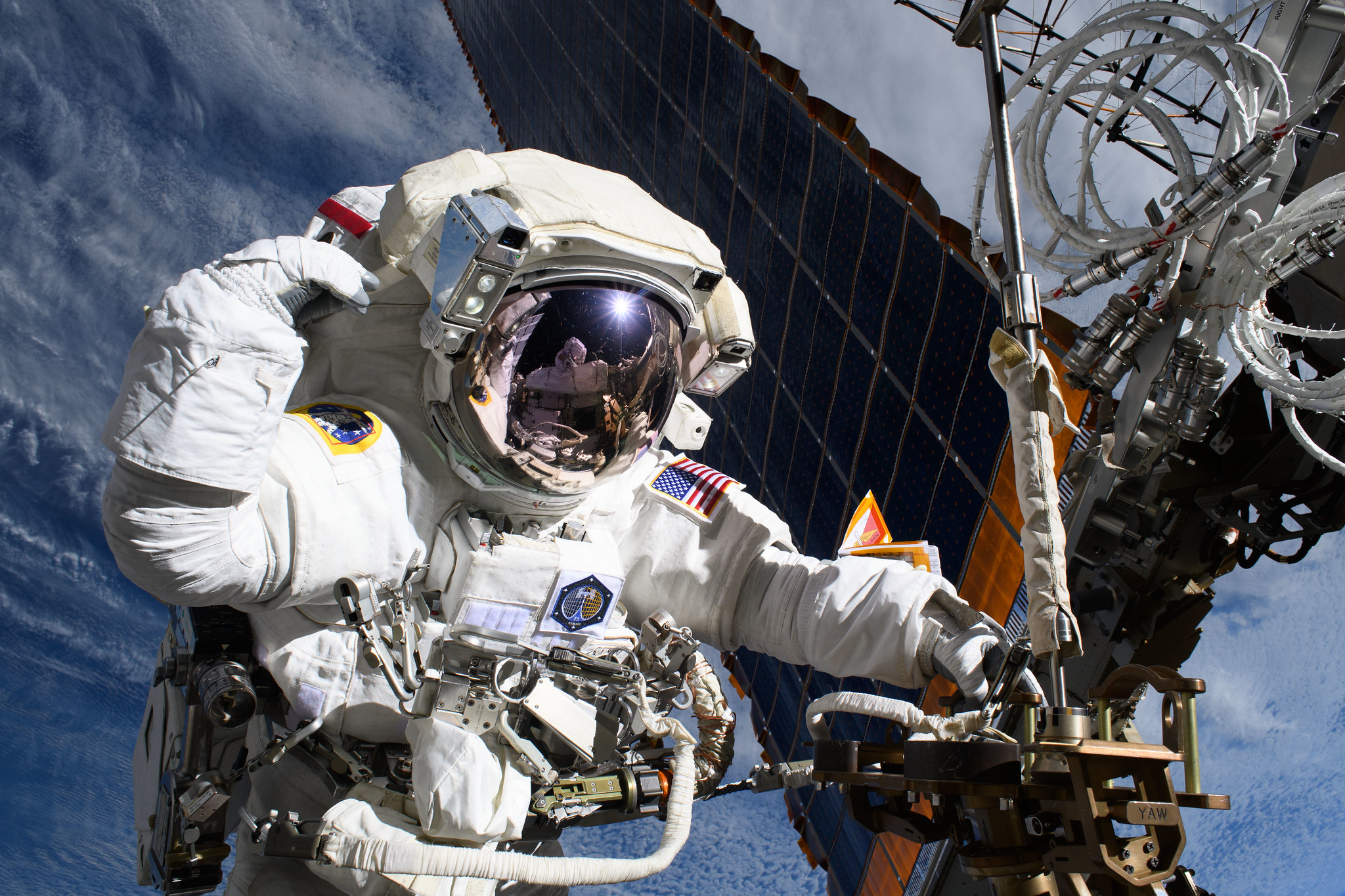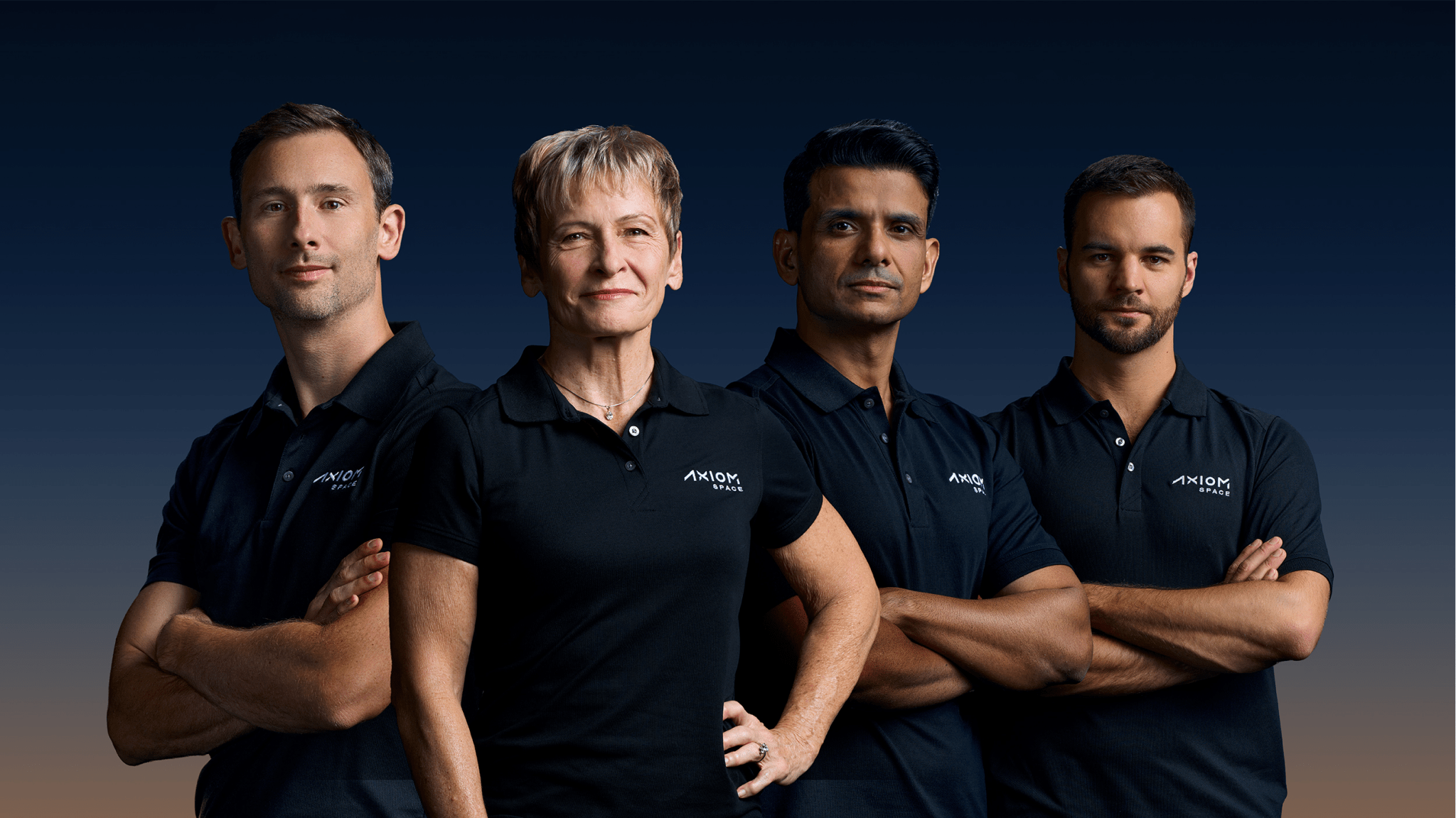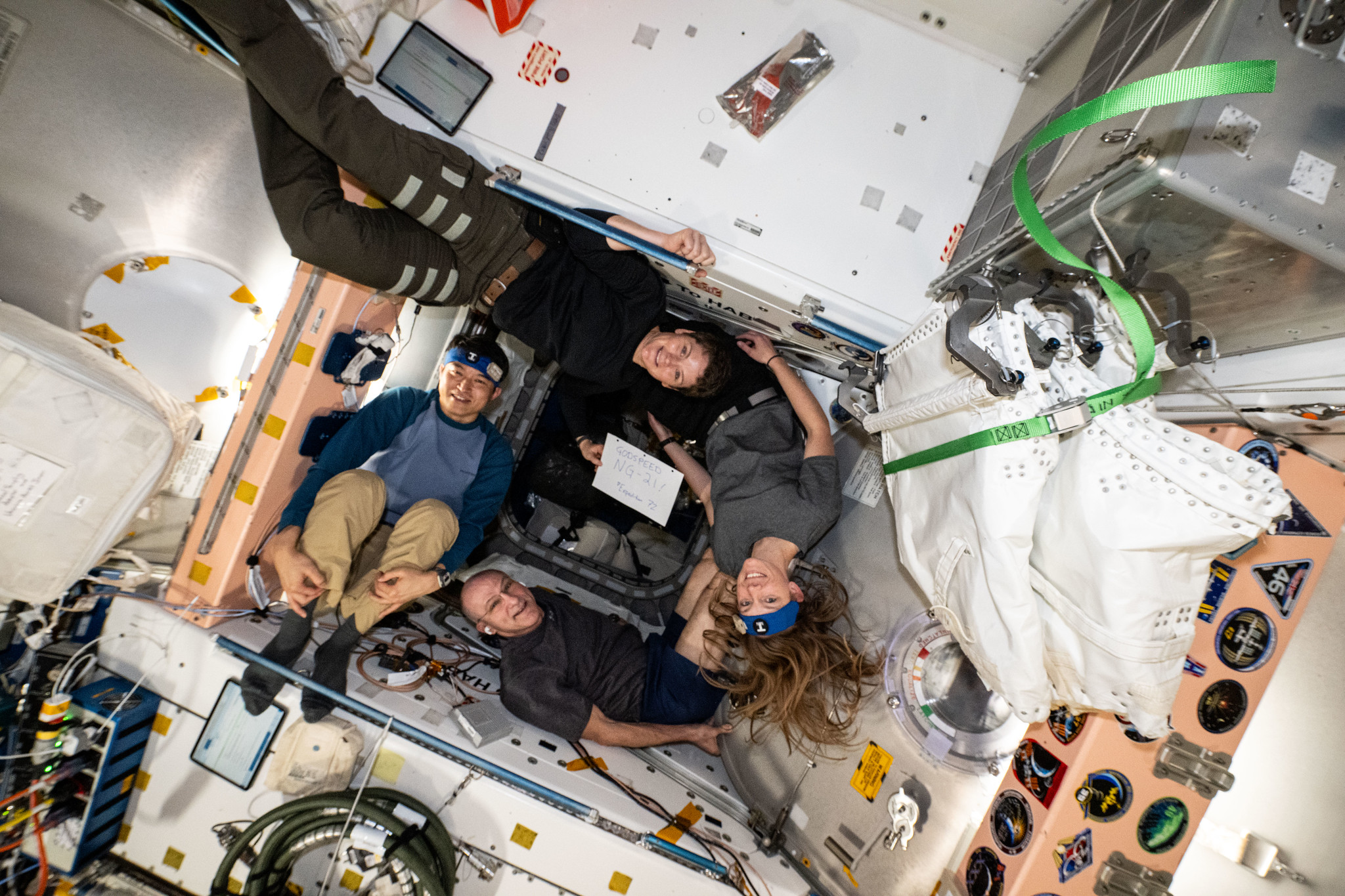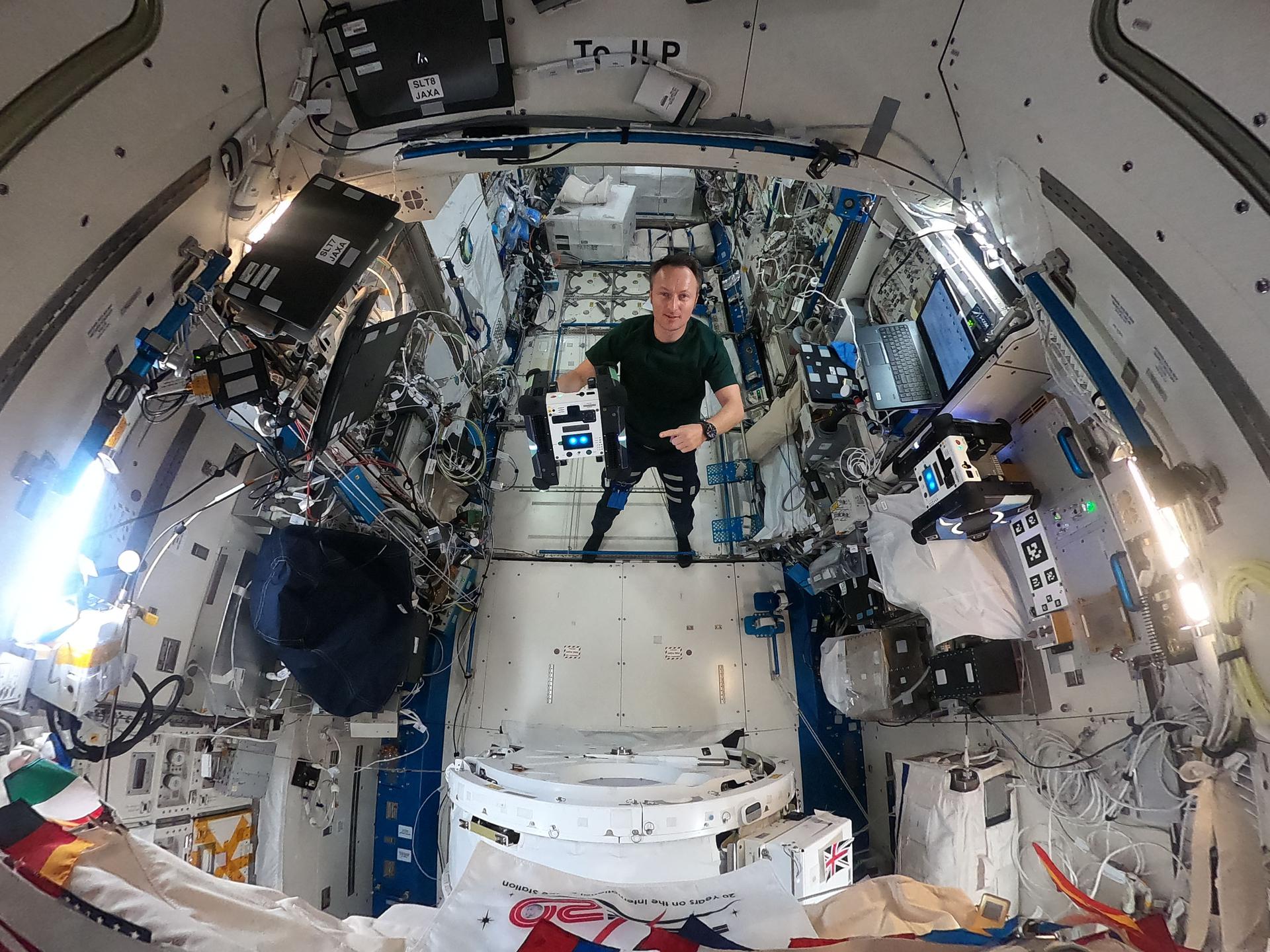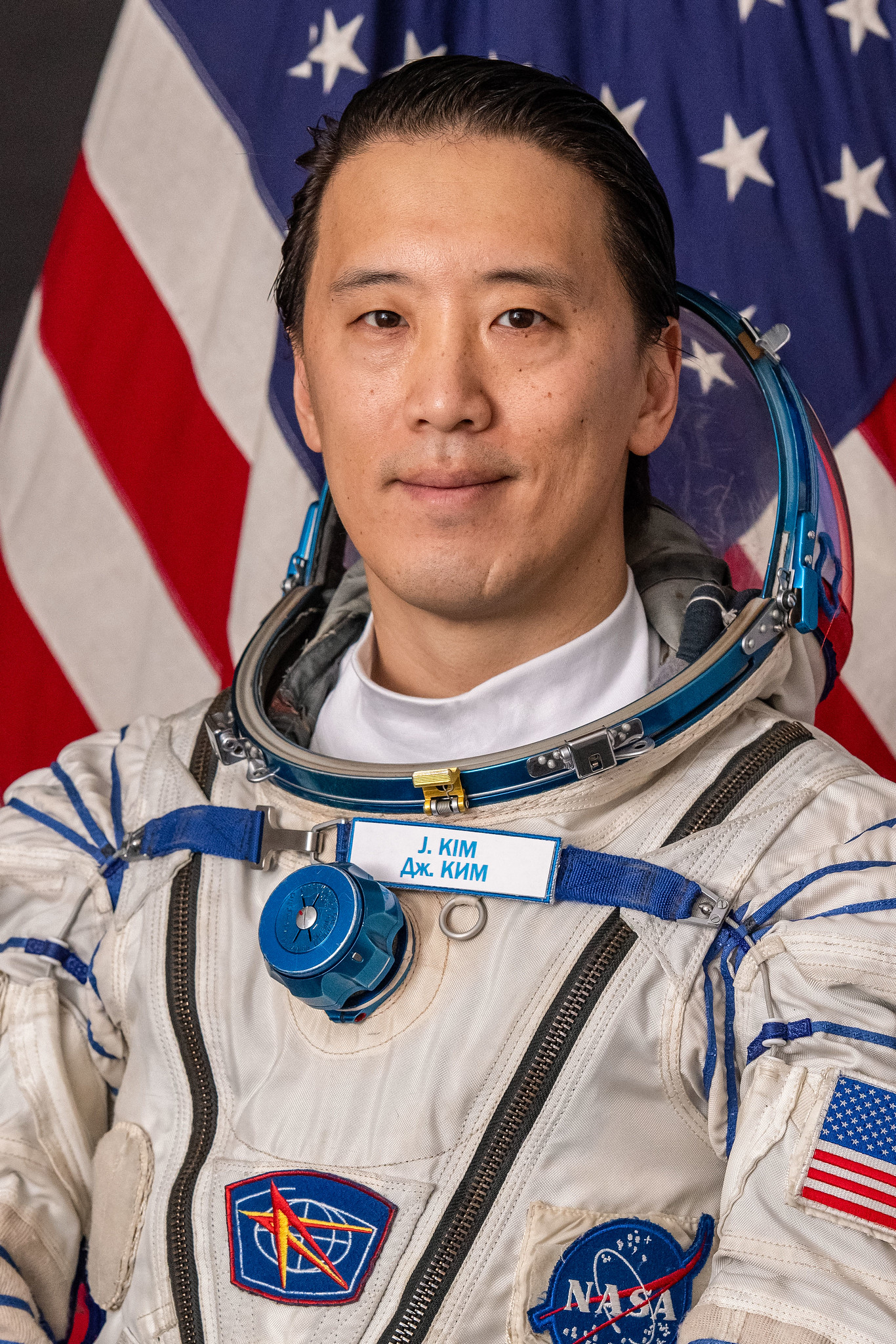2 min read Preparations for Next Moonwalk Simulations Underway (and Underwater) A digital rendering of the NASA-supported commercial space station, Vast’s Haven-1, which will provide a microgravity environment for crew, research, and in-space manufacturing. Vast NASA-supported commercial space station, Vast’s Haven-1, recently completed a test of a critical air filter system for keeping future astronauts healthy in orbit. Testing confirmed the system can maintain a safe and healthy atmosphere for all planned Haven-1 mission phases. Testing of the trace contaminant control system was completed at NASA’s Marshall Space Flight Center in…
Read MoreTag: Humans in Space
NASA Astronaut to Answer Questions from Students in Washington State
NASA astronaut Anne McClain points a camera at herself and takes a “space-selfie” during a May 1, 2025, spacewalk outside the International Space Station. Credit: NASA NASA astronaut and Spokane, Washington, native Anne McClain will participate in an event with students from the Mobius Discovery Center located in her hometown. McClain will answer prerecorded questions submitted by students from aboard the International Space Station. Watch the 20-minute Earth-to-space call on the NASA STEM YouTube Channel. The event will take place at 1:25 p.m. EDT on Tuesday, May 27. Media interested…
Read MoreStation Nation: Meet Megan Harvey, Utilization Flight Lead and Capsule Communicator
Megan Harvey is a utilization flight lead and capsule communicator, or capcom, in the Research Integration Office at NASA’s Johnson Space Center in Houston. She integrates science payload constraints related to vehicles’ launch and landing schedules. She is also working to coordinate logistics for the return of SpaceX vehicles to West Coast landing sites. Read on to learn about Harvey’s career with NASA and more! Megan Harvey talking to a flight director from the Remote Interface Officer console in the Mission Control Center at NASA’s Johnson Space Center in Houston.…
Read MoreNASA, International Astronauts Address Students from New York, Ohio
Astronaut Anne McClain is pictured on May 1, 2025, near one of the International Space Station’s main solar arrays. Credit: NASA NASA astronaut Nichole Ayers and JAXA (Japan Aerospace Exploration Agency) astronaut Takuya Onishi will answer prerecorded questions submitted by middle and high school students from New York and Ohio. Both groups will hear from the astronauts aboard the International Space Station in two separate events. The first event at 10:20 a.m. EDT on Tuesday, May 20, includes students from Long Beach Middle School in Lido Beach, New York. Media…
Read MoreNASA to Participate in Next Private Astronaut Mission Teleconference
The Axiom Mission 4, or Ax-4, crew will launch aboard a SpaceX Dragon spacecraft to the International Space Station from NASA’s Kennedy Space Center in Florida. From left to right: ESA (European Space Agency) astronaut Sławosz Uznański-Wiśniewski of Poland, former NASA astronaut Peggy Whitson, ISRO (Indian Space Research Organization) astronaut Shubhanshu Shukla, and Tibor Kapu of Hungary. Credit: Axiom Space NASA will join a media teleconference hosted by Axiom Space at 10:30 a.m. EDT, Tuesday, May 20, to discuss the launch of Axiom Mission 4 (Ax-4), the fourth private astronaut…
Read MoreNASA, International Astronauts to Connect with Students in Texas
Expedition 72 Flight Engineers Takuya Onishi from JAXA (Japan Aerospace Exploration Agency) and NASA astronauts Anne McClain, Nichole Ayers, and Don Pettit pose while inside the vestibule between the International Space Station’s Unity module and the Cygnus space freighter. NASA NASA astronaut Nichole Ayers and JAXA (Japan Aerospace Exploration Agency) astronaut Takuya Onishi will answer prerecorded questions about science, technology, engineering, and mathematics from students in Mansfield, Texas, while aboard the International Space Station. The 20-minute space-to-Earth call will take place at 10:40 a.m. EDT on Monday, May 5, and…
Read MoreLunar Space Station for NASA’s Artemis Campaign to Begin Final Outfitting
3 min read Preparations for Next Moonwalk Simulations Underway (and Underwater) Gateway’s HALO module at Northrop Grumman’s facility in Gilbert, Arizona, on April 4, 2025, shortly after its arrival from Thales Alenia Space in Turin, Italy. NASA/Josh Valcarcel NASA continues to mark progress on plans to work with commercial and international partners as part of the Gateway program. The primary structure of HALO (Habitation and Logistics Outpost) arrived at Northrop Grumman’s facility in Gilbert, Arizona, where it will undergo final outfitting and verification testing. HALO will provide Artemis astronauts with…
Read MoreNavigation Technology
4 Min Read Navigation Technology ESA astronaut Matthias Maurer sets up an Astrobee for the ReSWARM experiment. Credits: NASA Science in Space April 2025 Humans have always been explorers, venturing by land and sea into unknown and uncharted places on Earth and, more recently, in space. Early adventurers often navigated by the Sun and stars, creating maps that made it easier for others to follow. Today, travelers on Earth have sophisticated technology to guide them. Navigation in space, including for missions to explore the Moon and Mars, remains more of…
Read MoreNASA Marshall Fires Up Hybrid Rocket Motor to Prep for Moon Landings
4 Min Read NASA Marshall Fires Up Hybrid Rocket Motor to Prep for Moon Landings NASA’s Artemis campaign will use human landing systems, provided by SpaceX and Blue Origin, to safely transport crew to and from the surface of the Moon, in preparation for future crewed missions to Mars. As the landers touch down and lift off from the Moon, rocket exhaust plumes will affect the top layer of lunar “soil,” called regolith, on the Moon. When the lander’s engines ignite to decelerate prior to touchdown, they could create craters…
Read MoreNASA Astronaut to Answer Questions from Students in California
NASA astronaut and Expedition 73 Flight Engineer Jonny Kim. Credit: Gagarin Cosmonaut Training Center Students from Santa Monica, California, will connect with NASA astronaut Jonny Kim as he answers prerecorded science, technology, engineering, and mathematics-related questions aboard the International Space Station. Watch the 20-minute space-to-Earth call at 12:10 p.m. EDT on Tuesday, April 29, on the NASA STEM YouTube Channel. Media interested in covering the event must RSVP by 5 p.m., Friday, April 25, to Esmi Careaga at: ecareaga@smmusd.org or 805-651-3204 x71582. The event is hosted by Santa Monica High…
Read More